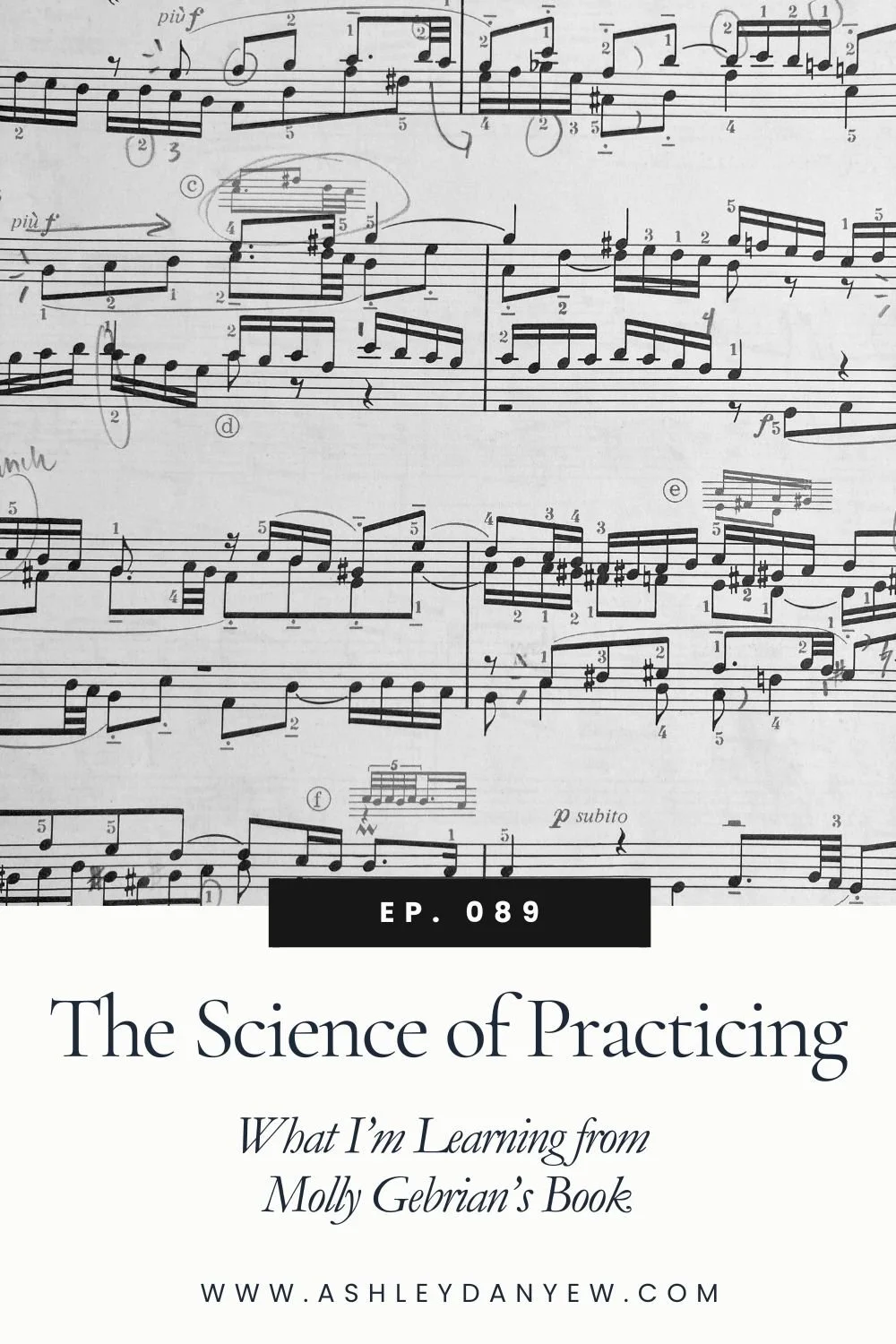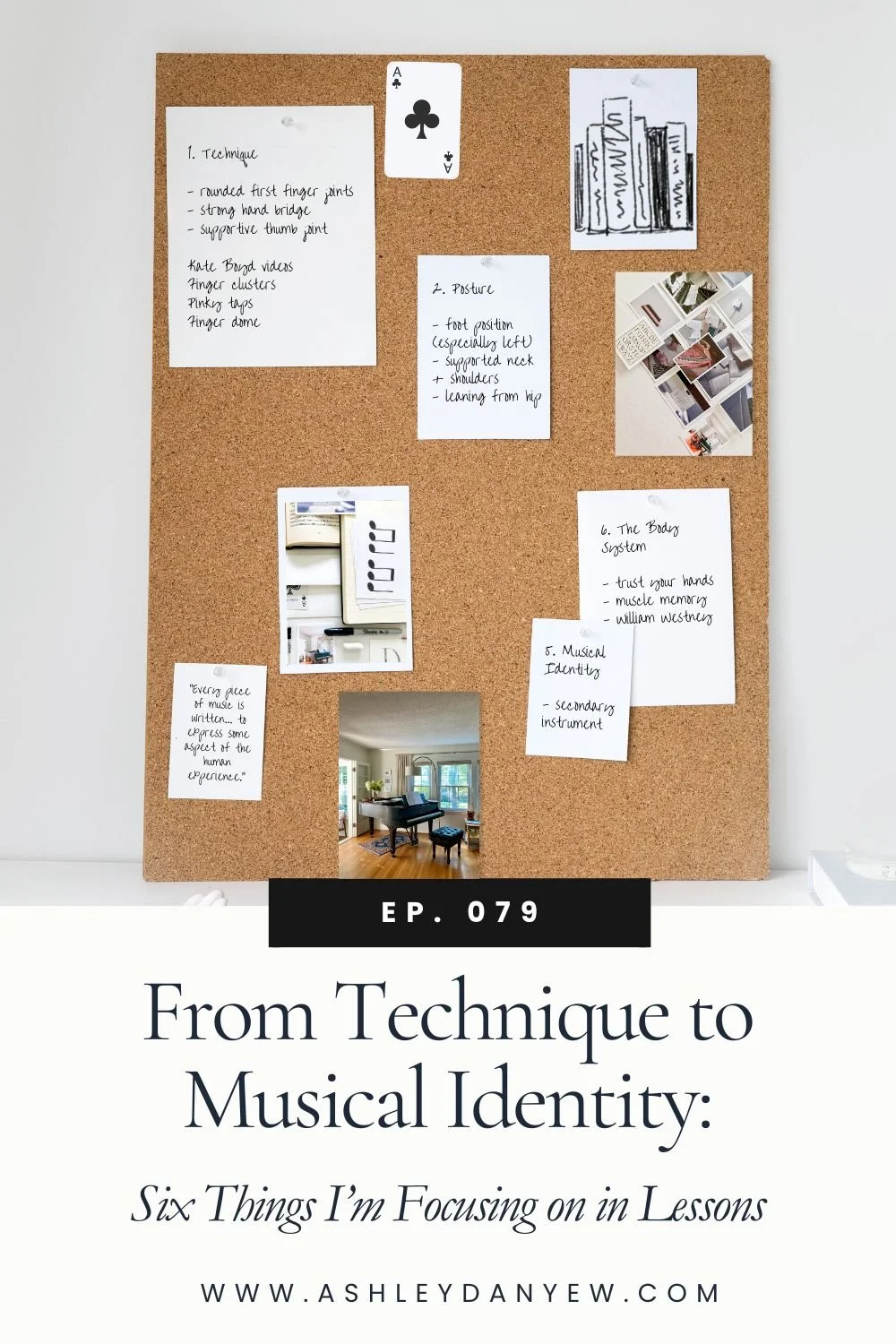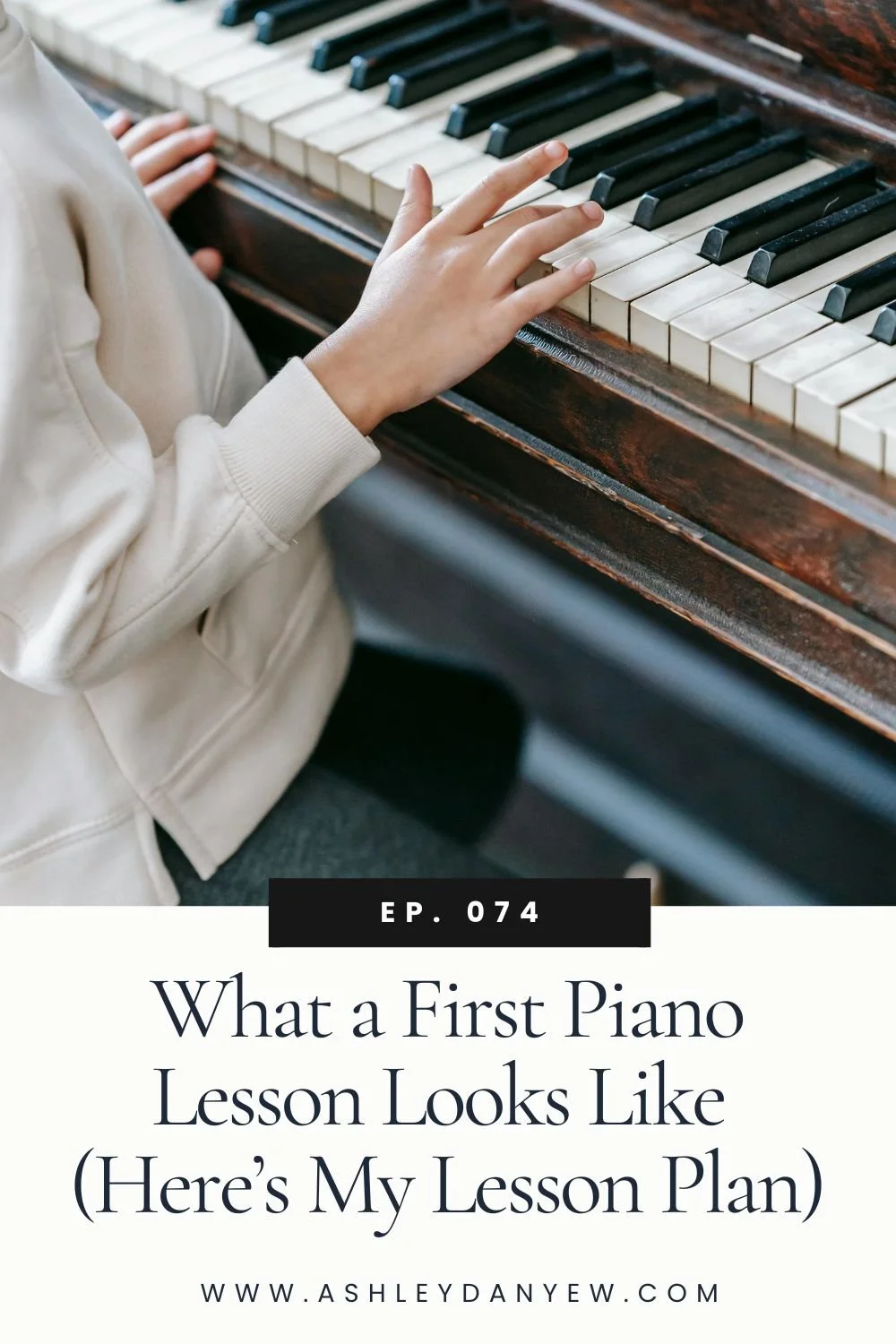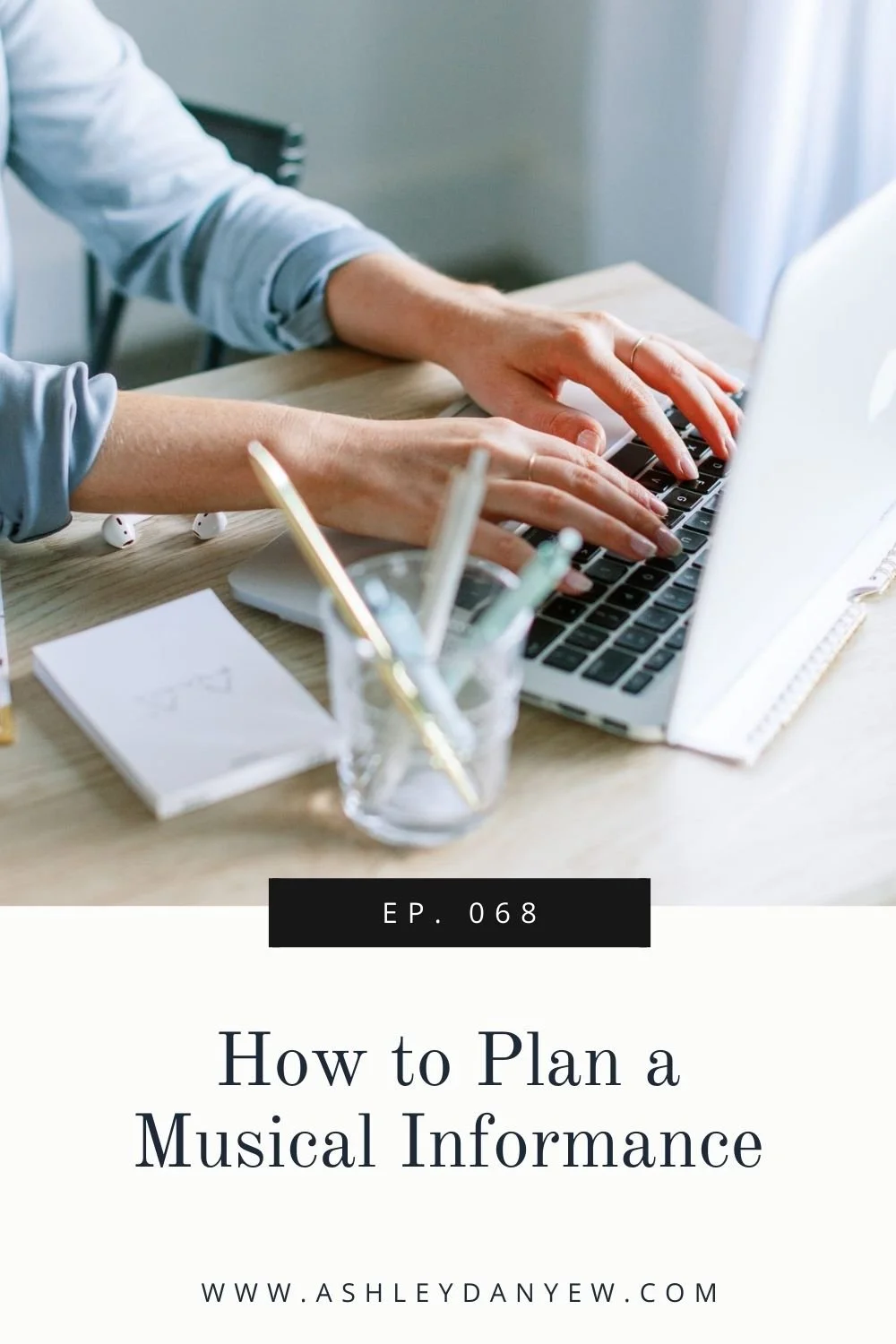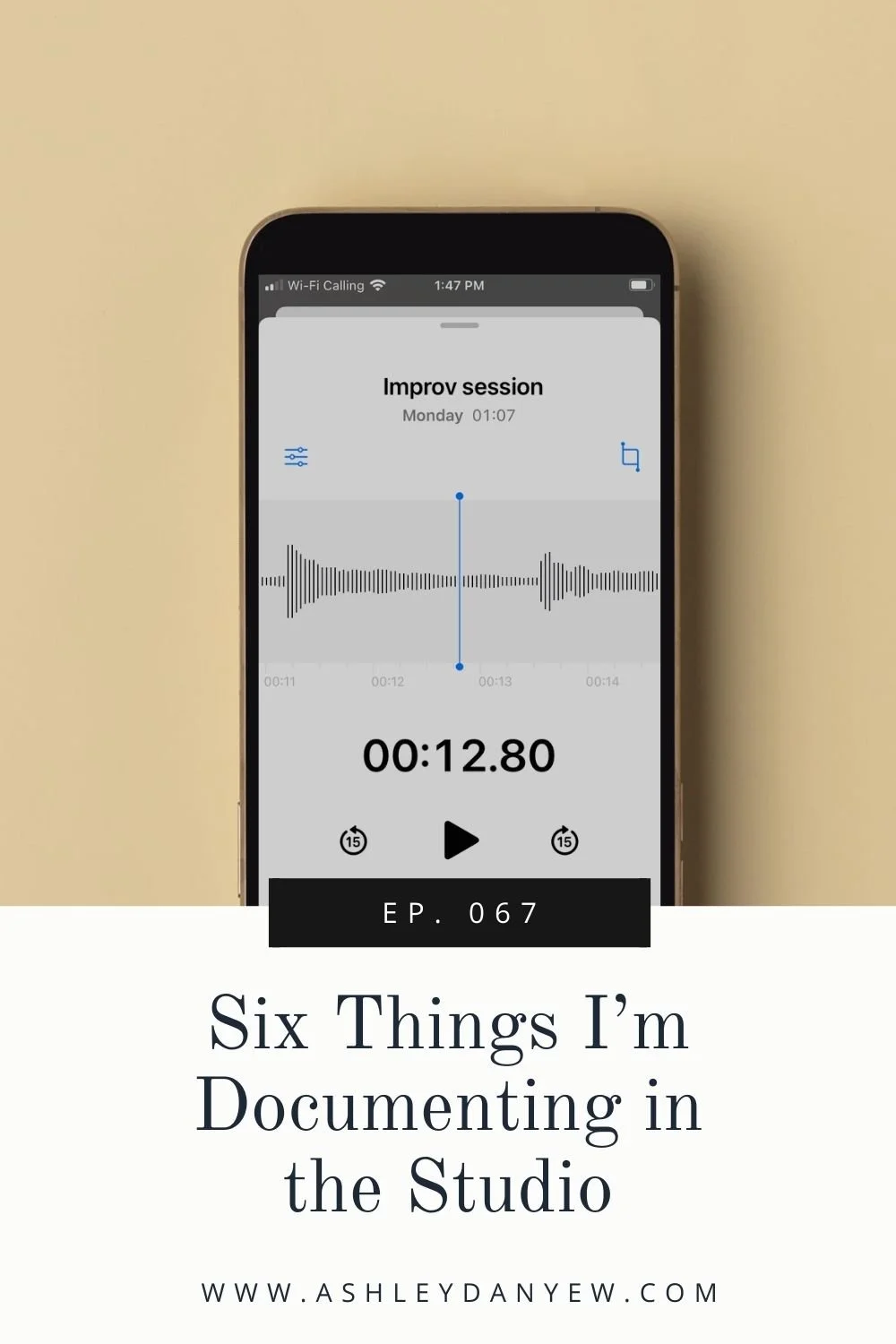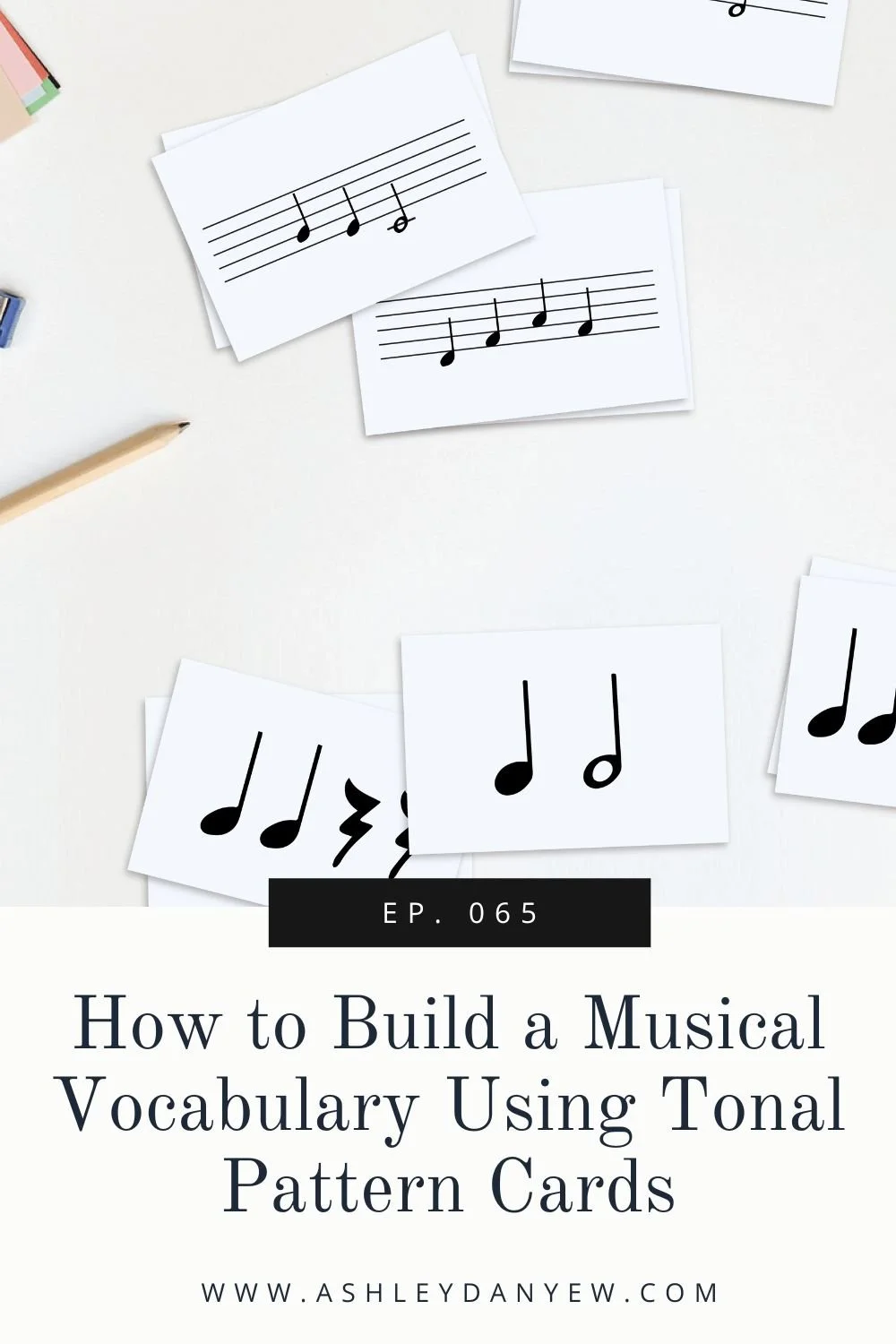Resources Mentioned
*Disclosure: I get commissions for purchases made through links in this post.
Wunderkeys (Andrea Dow)
Teach Piano Today blog
A Piano Teacher’s Legacy (Richard Chronister)
Zig Zag: The Surprising Path to Greater Creativity (Keith Sawyer)
Ep. 011 - Zig Zag: The Surprising Path to Greater Creativity
Questions About Creative Music Teaching
There's been a lot of talk in recent years about creative teaching strategies and being a creative teacher. But what does that really mean? What does it look like in practice?
Of course, there's a certain amount of creativity naturally embedded in the work of making music together. Music is a creative art! But what does creative teaching mean? Is it inherent or is it something we need to develop? Is it something we bring into our teaching space or is it something we co-construct with our students?
Does this sound a little too research-y? Once a researcher, always a researcher, I guess!
Here's a simpler description:
In our world today, creative teaching seems to mean having an arsenal of note-naming worksheets, interactive Google Slide activities, and dice board games to reinforce every new skill or concept. Some of these tools are great and technology has certainly changed the way we teach and present new information, especially in the past few years.
The problem is the quality.
What are the educational goals or objectives of these games and activities? Are they musical (this is a big one for me)? Do they help the learner develop their musicianship skills? Do they provide the right amount of challenge?
These are questions I've been pondering in my own teaching this year and today, I'm sharing some of what I've been reading and learning about creative music teaching in practice.
Music Games to Reinforce New Concepts
A few years ago, I tested a new method series for beginning students by Andrea Dow called Wunderkeys. I've found numerous teaching ideas over the years on Andrea's blog, Teach Piano Today, and was curious to learn more about her approach to teaching beginning musical concepts.
Each unit begins with a story. The characters are fun and engaging and my students loved this part of the lesson. As a teacher, I loved that the story included prompts for experiencing or practicing the new musical skill or concept: reading quarter notes, playing steps or skips, finding a new note on the keyboard, etc.
After the story is a practice page, which provided a great opportunity for sight-reading and technique while also serving as preparation for the pieces in the unit.
Next, there are 4-6 short pieces that reinforce the new skill or concept. I found these to be accessible and fun for students to learn, though musically, the material was fairly similar and did not provide much contrast.
Most units end with a game. There's a page that serves as a game board and a page of playing cards that can be cut out. In addition, most games require dice and coins or markers of some kind.
Don't get me wrong, my students loved playing these games and it's a great way to get off the bench during the lesson, but upon further reflection, I recognized that the majority of time was not spent reviewing the given musical concept but rather rolling the dice and competing with your opponent (usually me, since we were in a one-on-one setting). "What will the student remember a month from now?" I thought. "Or looking back on this experience next year?"
The pros, of course, are that these types of activities are engaging. Students love moving a game piece around the board and competing to win. And rolling a dice is always fun.
Isn't that a creative way to review or practice that musical concept? But after observing my students participate in activities like this and reflecting on the outcomes, I realized so many of these things—games and activities and teaching strategies that are labeled as 'creative'—are not high-quality musical or educational experiences. As such, they're not something I want to include on a regular basis in my teaching or as an integral part of my curriculum.
Creative Music Teaching Strategies
Here's the thing:
As a young teacher, I used to think creative teaching meant the ability to improvise in the moment. Not through music, necessarily, but through teaching. Adapting to meet a student where they are, modifying a home assignment based on what they can do successfully, creating a warm-up or movement activity or listening game on the spot that ties in with a concept we're working on. Abandoning the lesson plan and spending the lesson exploring a piece a student suggests.
Some of these things can be elements of creative teaching, but only if prepared well and thoughtfully integrated and sequenced.
In his book, A Piano Teacher’s Legacy, Richard Chronister wrote:
"Responding to the need of the moment is not creative teaching if previous teaching caused the need. Departing from a prepared lesson plan is not creative teaching if previous teaching caused the departure. Making thorough explanations of musical notation is not creative teaching when these explanations come after the student has struggled with the notation in his practice at home and failed."
Now, after years of teaching practice, observation, and reflection, I find that creative teaching is about the strategies we use to prepare, introduce, and reinforce musical concepts and develop musical skills. But it doesn't end there.
Chronister urges:
"In addition to finding ways to teach new musical elements creatively before practice, we must seek out teaching materials that present the student with activities on a page that are self-explanatory. This means that creative teaching goes on to include practice steps for pieces that guide the student to careful practice. Finally, creative teaching means we make every exercise, every piece, every activity a truly musical experience—the experience of beauty, excitement, exhilaration which comes from a performance that successfully communicates the meaning of the music to an audience."
I love that last part.
I talked about that in Ep. 041 - Focus on the Music: creating those foundational experiences for students and seeking out the most musical moments in each lesson.
More and more, I find creative teaching is in the planning, the sequencing. Choosing repertoire with intention. Thoughtfully sequencing practice steps to guide a student through something new or challenging. Balancing and integrating theory, technique, sight-reading, and yes, creativity into a 45-minute lesson.
In his book, Zig Zag: The Surprising Path to Greater Creativity, author Keith Sawyer, a former jazz pianist and creativity researcher described:
“The genius of a talented teacher is his or her ability to sense exactly what each pupil already knows, and to creatively design an activity that’s targeted just above that skill level. As pupils grow in knowledge, the creative teacher adapts right along with them, keeping the students in the flow zone.”
P.S. This is one of my favorite books on creativity. Listen to Ep. 011 - Zig Zag: The Surprising Path to Greater Creativity to hear some of my biggest takeaways.
This year, I think my philosophy of teaching will be focused on the quality of my teaching. I want to get back to focusing on the music itself, discovering things about the piece together, helping my students become more independent learners, and exploring creativity and play—in the context of the music. I want to focus on choosing high-quality, diverse repertoire, as well, not the same handful of collections by the same four composers.
That’s the other part of this.
Creative Teaching Through Repertoire
That’s the other part of this. I've seen some piano teachers abandoning traditional method series and repertoire in favor of trendy, pop-style music—not because it offers a unique musical style, necessarily or because they want to help their students develop a different skillset, but solely because they think it will appeal to their students and it will keep them engaged and wanting to continue lessons.
I've explored a few of these collections with a student here and there to test them out. The problem I've found is the loss of musical quality and diversity. Everything has the same four chords, keys, finger patterns, accompaniment styles, and form. They're all so similar that it doesn't feel like students are really progressing or developing their skills or musical understanding as they work through the book.
And abandoning all other music in favor of these more modern, trendy collections means our students are missing out on the breadth and depth of the piano literature that is available.
Our challenge as teachers, I think, is to make music relevant, make it exciting for our students. There’s nothing wrong with pop-style music—in fact, I think that there's a lot we can learn from that genre and it's really important to teach pop-music skills—but when it’s the only thing we teach in our studio, because we think it makes us hip and better able to connect with our students, I think we’re missing the point.
Richard Chronister reminds us again that creative teaching comes back to how we teach, not what we teach. He wrote, "Creative teaching is finding ways to help students teach themselves something they want to learn."
I’d love to hear from you:
What does this look like for you and your students?





